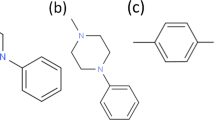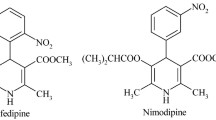Abstract
The intestinal absorption of 6-mercaptopurine and its nucleoside 6-mercaptopurine riboside has been studied in the rat with the in situ dual luminal and vascular perfusion. 6-Mercaptopurine is an inactive prodrug that requires intestinal absorption, cellular uptake and intracellular anabolism for cytotoxic activity. Vascular and mucosal samples were analysed by high-performance liquid chromatography (HPLC) to assess the rate of vascular appearance and amounts of thiopurine and its nucleoside in the mucosa. With 5 mmol luminal 6-mercaptopurine/l, the drug is transported across the intestine unchanged at a rate of 0.053±0.006 μmol min−1 (g dry wt.)−1. At concentrations below 20 mmol/l, 6-mercaptopurine riboside is not transported across the intestine intact but is split by phosphorolysis in the intestinal mucosa. The rate of vascular appearance of 6-mercaptopurine [0.043±0.005 μmol min−1 (g dry wt.)−1] from 5 mmol luminal 6-mercaptopurine riboside/l did not differ significantly from that seen with 5 mmol luminal 6-mercaptopurine/l. When the lumen was perfused with 6-mercaptopurine riboside the riboside appeared in the tissue together with a higher mucosal concentration of 6-mercaptopurine than in perfusions with 6-mercaptopurine. Some metabolism of 6-mercaptopurine to 6-thioguanine was also observed; however, no 6-thioguanine appeared in the vascular effluent. Increasing the luminal phosphate concentration from 2 to 10 mmol/l increased mucosal phosphorolysis of 6-mercaptopurine riboside and more than tripled the rate of vascular appearance of 6-mercaptopurine; conversion of 6-mercaptopurine to 6-thioguanine was significantly inhibited. These results suggest that with a modest increase in luminal phosphate concentration, 6-mercaptopurine riboside can be a more effective substrate than the free drug for the oral delivery of 6-mercaptopurine.
Similar content being viewed by others
References
Wade A, Reynolds JEF (eds) (1977) Ed. Martindale: the extra pharmacopoeia. Pharmaceutical Press, London, pp 154–156
Elion GB, Burgi E, Hitchings GH (1952) Studies on condensed pyrimidine systems. IX. The synthesis of some 6-substituted purines. J Am Chem Soc 74:411–414
Tidd DM, Paterson ARP (1974) A biochemical mechanism for the delayed cytotoxic reaction of 6-mercaptopurine. Cancer Res 34:738–746
Bokkerink JPM, Stet EH, De Abreu RA, Damen FJM, Hulscher TW, Bakker MAH, Van Baal JA (1993) 6-Mercaptopurine: cytotoxicity and biochemical pharmacology in human malignant T-lymphoblasts. Biochem Pharmacol 45:1455–1463
Woods RA, Henderson RM, Henderson JF (1978) Consequences of inhibition of purine biosynthesis de novo by 6-methylmercaptopurine ribonucleoside in cultured lymphoma L5178Y cells. Eur J Cancer 14:765–770
Zimm S, Collins JM, Riccardi R, O'Neill D, Narang PK, Chabner B. Poplack DG (1983) Variable bioavailability of oral mercaptopurine. Is maintenance chemotherapy in acute lymphoblastic leukemia being optimally delivered? N Engl J Med 17:1005–1009
Lennard L, Lilleyman JS, Van Loon J, Weinshilboum RM (1990) Genetic variation in response to 6-mercaptopurine for child-hood acute lymphoblastic leukemia. Lancet 336:225–229
Bronk JR, Lister N, Shaw MI (1988) Transport and metabolism of 6-thioguanine and 6-mercaptopurine in mouse small intestine. Clin Sci 74:629–638
Stow RA, Bronk JR (1993) Purine nucleoside transport and metabolism in isolated rat jejunum. J Physiol (Lond) 468:311–324
Yu TF (1974) Milestones in the treatment of gout. Am J Med 56:676–683
Bronk JR, Hastewell JG (1989) The transport and metabolism of the uridine mononucleotides by rat jejunum in vitro. J. Physiol (Lond) 408:129–135
Hanson PJ, Parsons DS (1976) The utilisation of glucose and production of lactate by in vitro preparations of rat small intestine: effects of vascular perfusion. J Physiol (Lond) 255:775–795
Parsons DS, Shaw MI (1983) Application of high performance liquid chromatography to study transport and metabolism of nucleic acid by rat jejunum in vitro. Q J Exp Physiol 68:39–51
Parsons DS, Shaw MI (1983) Use of high performance liquid-chromatography to study absorption and metabolism of purines by rat jejunum in vitro. Quart J Exp Physiol 68:53–57
Bostrom B, Erdmann G (1993) Cellular pharmacology of 6-mercaptopurine in acute lymphoblastic leukemia. Am J Pediatr Hematol Oncol 15:80–86
Bronk JR, Helliwell PA, Macklin HJ (1992) Distribution of uridine phosphorylase along rat intestinal villi. Z Gastroenterol 30:220
Author information
Authors and Affiliations
Rights and permissions
About this article
Cite this article
Pennington, A.M., Bronk, J.R. The absorption of 6-mercaptopurine from 6-mercaptopurine riboside in rat small intestine: effect of phosphate. Cancer Chemother. Pharmacol. 36, 136–142 (1995). https://doi.org/10.1007/BF00689198
Received:
Accepted:
Issue Date:
DOI: https://doi.org/10.1007/BF00689198




